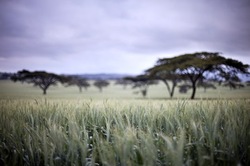Wall Street Journal | 29 March 2011
By DAVID COTTLE
The traditional capital markets are characterized by low-volume, rather tepid trade at present, as investors look towards quarter-end. So let’s leave them to their torpor and look instead at a market that remains vibrant.
Along with the ever-rising prices of agricultural foodstuffs has come rapid growth in the price of the land on which they’re grown. Indeed, UBS analyst Darren Smith this week described land itself as one of the most sought after commodities of all now.
Rising populations, and rising living standards in the emerging economies, along with the increasing use of biofuels, have seen a rush to plant wherever possible.
According to World Bank estimates, some 35 million hectares across Africa have been bought or leased in recent years by foreign investors. Some regions of Ethiopia have offered as much as a quarter of their best farm land to those who’d like to take advantage of rising commodity prices.
The buyers tend to be from nations with plenty of cash, but little good growing space of their own. Saudi Arabia is often mentioned, as of course is China.
Moreover, the trend isn’t confined to Africa. According to Mr. Smith, Brazil’s recent attempts to restrict inward investment by foreign governments are widely believed to be aimed at limiting Chinese investment in its land.
Across the border in Argentina, Beidahaug Group, a conglomerate of Chinese state-owned businesses, wants to lease land in the Rio Negro area for industrial soy planting.
The imperatives for governments could hardly be greater. After all, rising food prices played their parts in the political unrest that has swept across North Africa and the Middle East this year.
The imperative for humans more generally is pretty strong, too.
Between 1961 and 1990, wheat yields were growing at 3% per year, well ahead of population growth. Between 1990 and 2007, they were down to 0.5%, well below population growth of 1.4%.
No wonder then, that land is bid for. And not simply in developing countries.
Data from the Chicago Federal Reserve pointed to prices for some good U.S. farmland rising 23% in 2010. Kansas City President Thomas Hoenig said in February that soaring prices may be the result of another unsustainable bubble that could damage the U.S. economy when it bursts.
He may be right of course, but at times when regimes are tottering thanks to higher food prices, it seems unnecessary to look too hard for speculative activity.
The problem is rather of real supply, and real demand. Which means higher land prices are here to stay; an additional inflationary tailwind for the already rising cost of food.














